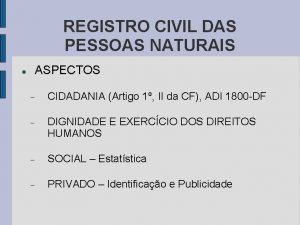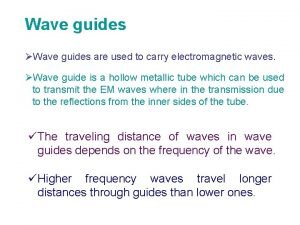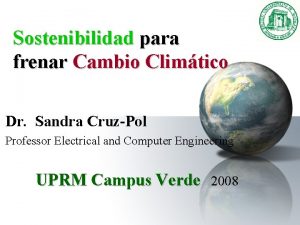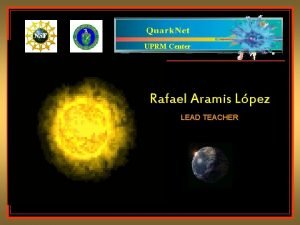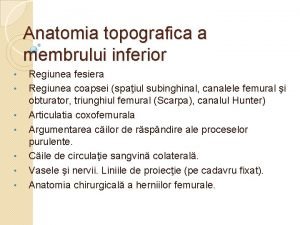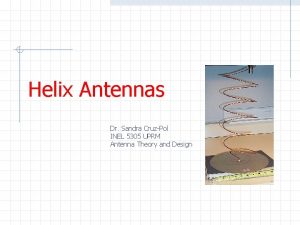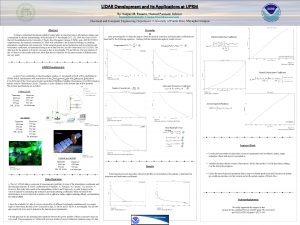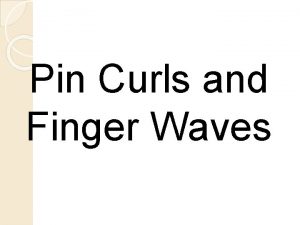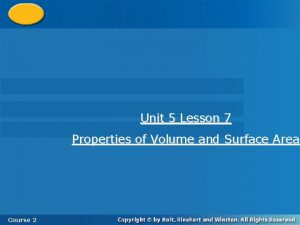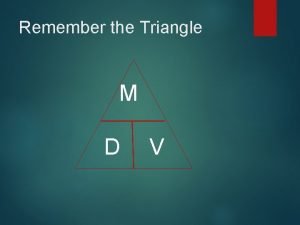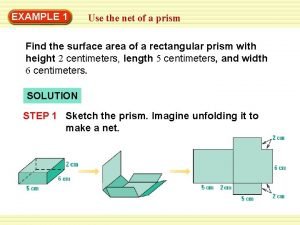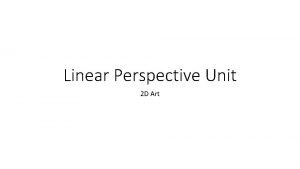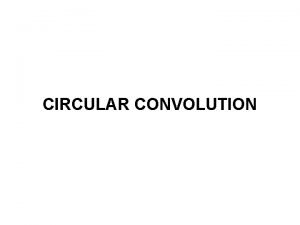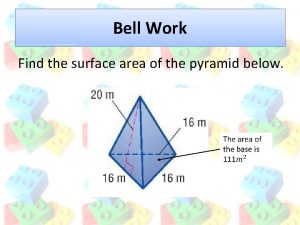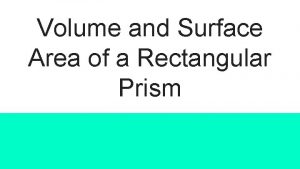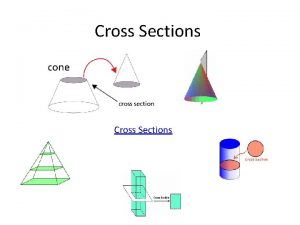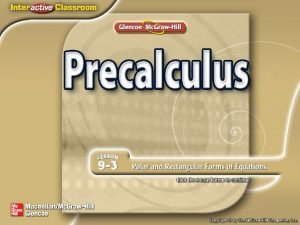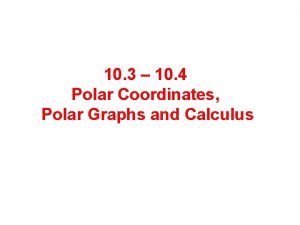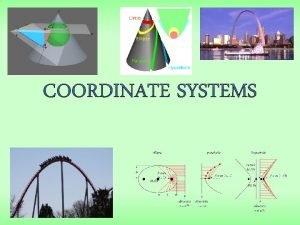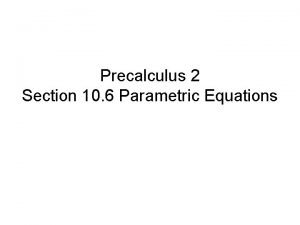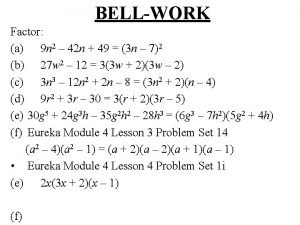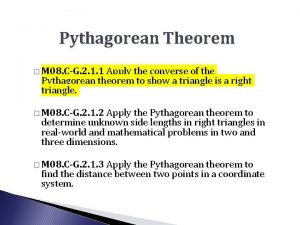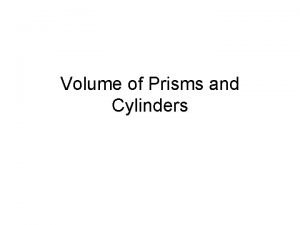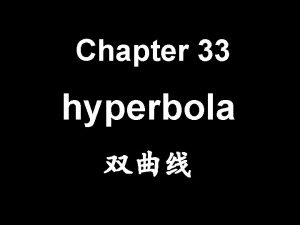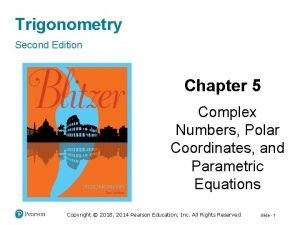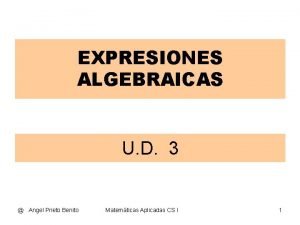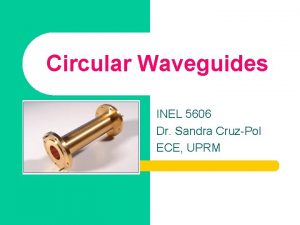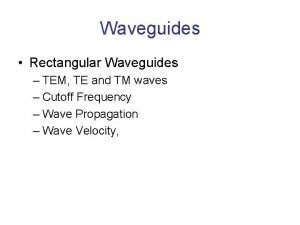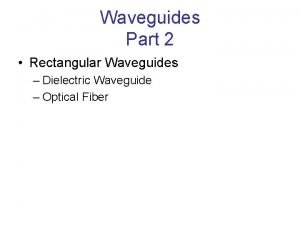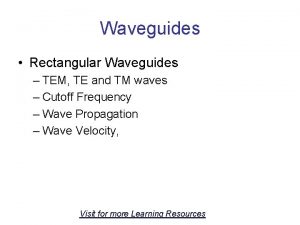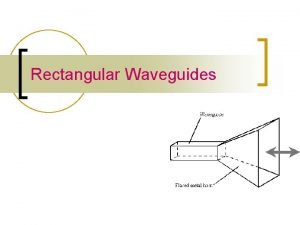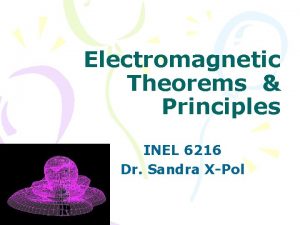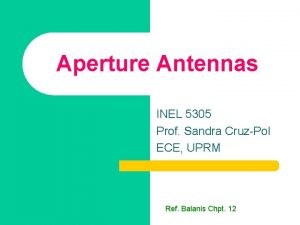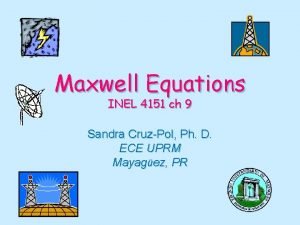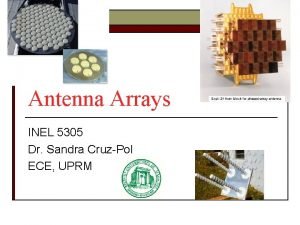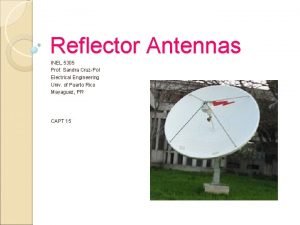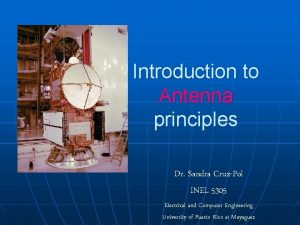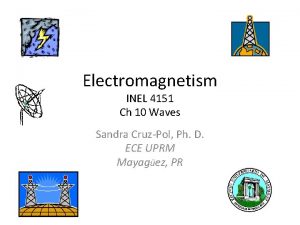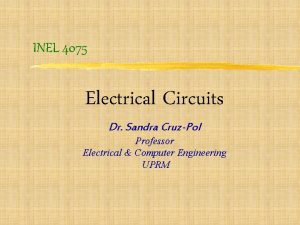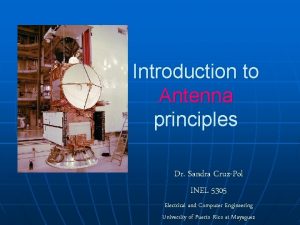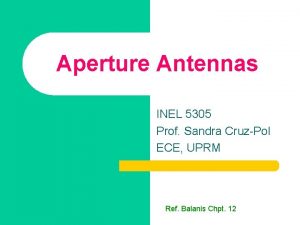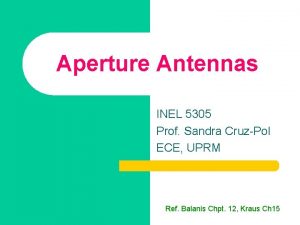Rectangular Waveguides Dr S CruzPol INEL 6216 University































![Power transmission n The average Poynting vector for the waveguide fields is [W/m 2] Power transmission n The average Poynting vector for the waveguide fields is [W/m 2]](https://slidetodoc.com/presentation_image_h2/26e91122f56bbd7bdd30316a49ab488f/image-32.jpg)












- Slides: 44

Rectangular Waveguides Dr. S. Cruz-Pol INEL 6216 University of Puerto Rico Mayagüez

Waveguide components Rectangular waveguide Waveguide bends Waveguide to coax adapter E-tee Figures from: www. microwaves 101. com/encyclopedia/waveguide. cfm

More waveguides http: //www. tallguide. com/Waveguidelinearity. html

Uses n To reduce attenuation loss ¡ ¡ n Can operate only above certain frequencies ¡ n High frequencies High power Acts as a High-pass filter Normally circular or rectangular ¡ We will assume lossless rectangular

Rectangular WG n Need to find the fields components of the em wave inside the waveguide ¡ n Ez Hz Ex Hx Ey Hy We’ll find that waveguides don’t support TEM waves http: //www. ee. surrey. ac. uk/Personal/D. Jefferies/wguide. html

Rectangular Waveguides: Fields inside Using phasors & assuming waveguide filled with n lossless dielectric material and n walls of perfect conductor, the wave inside should obey…

Then applying on the z-component…

Fields inside the waveguide

Substituting

Other components From Faraday and Ampere Laws we can find the remaining four components: *So once we know Ez and Hz, we can find all the other fields.

Modes of propagation From these equations we can conclude: n TEM (Ez=Hz=0) can’t propagate. n TE (Ez=0) transverse electric ¡ n TM (Hz=0) transverse magnetic, Ez exists ¡ n In TE mode, the electric lines of flux are perpendicular to the axis of the waveguide In TM mode, the magnetic lines of flux are perpendicular to the axis of the waveguide. HE hybrid modes in which all components exists

TM Mode n Boundary conditions: From these, we conclude: X(x) is in the form of sin kxx, where kx=mp/a, m=1, 2, 3, … Y(y) is in the form of sin kyy, where ky=np/b, n=1, 2, 3, … So the solution for Ez(x, y, z) is Figure from: www. ee. bilkent. edu. tr/~microwave/programs/magnetic/rect/info. htm

TM Mode n Substituting

TMmn n Other components are

TM modes The m and n represent the mode of propagation and indicates the number of variations of the field in the x and y directions n Note that for the TM mode, if n or m is zero, all fields are zero. n See applet by Paul Falstad http: //www. falstad. com/embox/guide. html n

TM Cutoff n The cutoff frequency occurs when n Evanescent: ¡ n Means no propagation, everything is attenuated Propagation: ¡ This is the case we are interested since is when the wave is allowed to travel through the guide.

Cutoff attenuation Propagation of mode mn fc, mn n The cutoff frequency is the frequency below which attenuation occurs and above which propagation takes place. (High Pass) n The phase constant becomes

Phase velocity and impedance n The phase velocity is defined as n And the intrinsic impedance of the mode is

Summary of TM modes Wave in the dielectric medium Inside the waveguide

Related example of how fields look: Parallel plate waveguide - TM modes Ez m=1 0 m=2 m=3 z a x

TE Mode n Boundary conditions: From these, we conclude: X(x) is in the form of cos kxx, where kx=mp/a, m=0, 1, 2, 3, … Y(y) is in the form of cos kyy, where ky=np/b, n=0, 1, 2, 3, … So the solution for Ez(x, y, z) is Figure from: www. ee. bilkent. edu. tr/~microwave/programs/magnetic/rect/info. htm

TE Mode n Substituting n Note that n and m cannot be both zero because the fields will all be zero.

TEmn n Other components are

Cutoff attenuation Propagation of mode mn fc, mn n The cutoff frequency is the same expression as for the TM mode n But the lowest attainable frequencies are lowest because here n or m can be zero.

Dominant Mode n n n The dominant mode is the mode with lowest cutoff frequency. It’s always TE 10 The order of the next modes change depending on the dimensions of the guide.

Summary of TE modes Wave in the dielectric medium Inside the waveguide

Variation of wave impedance n Wave impedance varies with frequency and mode h h. TE h’ 0 h. TM fc, mn

Example: Consider a length of air-filled copper X-band waveguide, with dimensions a=2. 286 cm, b=1. 016 cm operating at 10 GHz. Find the cutoff frequencies of all possible propagating modes. Solution: n From the formula for the cut-off frequency

Example An air-filled 5 -by 2 -cm waveguide has at 15 GHz n What mode is being propagated? n Find b n Determine Ey/Ex

Group velocity, ug n Is the velocity at which the energy travels. n It is always less than u’ http: //www. tpub. com/content/et/14092/css/14092_71. htm

Group Velocity n As frequency is increased, the group velocity increases.
![Power transmission n The average Poynting vector for the waveguide fields is Wm 2 Power transmission n The average Poynting vector for the waveguide fields is [W/m 2]](https://slidetodoc.com/presentation_image_h2/26e91122f56bbd7bdd30316a49ab488f/image-32.jpg)
Power transmission n The average Poynting vector for the waveguide fields is [W/m 2] n where h = h. TE or h. TM depending on the mode [W]

Attenuation in Lossy waveguide n When dielectric inside guide is lossy, and walls are not perfect conductors, power is lost as it travels along guide. n The loss power is n n Where a=ac+ad are the attenuation due to ohmic (conduction) and dielectric losses Usually ac >> ad

Attenuation for TE 10 n Dielectric attenuation, Np/m n Conductor attenuation, Np/m Dielectric conductivity!

Waveguide Cavities n n Cavities, or resonators, are used for storing energy Used in klystron tubes, bandpass filters and frequency meters It’s equivalent to a RLC circuit at high frequency Their shape is that of a cavity, either cylindrical or cubical.

Cavity TM Mode to z

TMmnp Boundary Conditions From these, we conclude: kx=mp/a ky=np/b kz=pp/c where c is the dimension in z-axis c

Resonant frequency n The resonant frequency is the same for TM or TE modes, except that the lowest-order TM is TM 111 and the lowest-order in TE is TE 101.

Cavity TE Mode to z

TEmnp Boundary Conditions From these, we conclude: kx=mp/a ky=np/b kz=pp/c where c is the dimension in z-axis c

Quality Factor, Q n n n The cavity has walls with finite conductivity and is therefore losing stored energy. The quality factor, Q, characterized the loss and also the bandwidth of the cavity resonator. Dielectric cavities are used for resonators, amplifiers and oscillators at microwave frequencies.

A dielectric resonator antenna with a cap for measuring the radiation efficiency Univ. of Mississippi

Quality Factor, Q n Is defined as

Example For a cavity of dimensions; 3 cm x 2 cm x 7 cm filled with air and made of copper (sc=5. 8 x 107) n Find the resonant frequency and the quality factor for the dominant mode. Answer:
 Execicio
Execicio Waveguides can carry
Waveguides can carry Waveguide in optical fiber
Waveguide in optical fiber Uprm inel
Uprm inel Uprm inel
Uprm inel Uprm inel
Uprm inel Sandra cruz transformados
Sandra cruz transformados Uprm inel
Uprm inel Uprm inel
Uprm inel Muschiul croitor localizare
Muschiul croitor localizare Inel uprm
Inel uprm Uprm inel
Uprm inel Inel kayser-fleischer
Inel kayser-fleischer Uprm inel
Uprm inel Sindromul masters allen
Sindromul masters allen 沈榮麟
沈榮麟 Rectangular base pin curls
Rectangular base pin curls Properties of a rectangular prism
Properties of a rectangular prism Mdv triangle
Mdv triangle How to find the base of a pentagonal prism
How to find the base of a pentagonal prism Rectangular prism one point perspective
Rectangular prism one point perspective Circular convolution
Circular convolution What is the area of a prism formula
What is the area of a prism formula V=bh rectangular prism
V=bh rectangular prism Beechdrops are leafless plants that lack chlorophyll
Beechdrops are leafless plants that lack chlorophyll Rectangular prism template
Rectangular prism template Road patterns
Road patterns Volume and surface area jeopardy
Volume and surface area jeopardy Diagonal cross sections
Diagonal cross sections Algebra picture
Algebra picture Find the rectangular coordinates of the point . a. c. b. d.
Find the rectangular coordinates of the point . a. c. b. d. The appearance of perspective
The appearance of perspective Polar curve area
Polar curve area Rectangular hyperbola equation
Rectangular hyperbola equation Matriz identidsd
Matriz identidsd Parametric equations precalculus
Parametric equations precalculus The area of a rectangular computer screen is 4x^2+20x+16
The area of a rectangular computer screen is 4x^2+20x+16 Converse of the pythagorean theorem worksheet
Converse of the pythagorean theorem worksheet Cross-projection sketch
Cross-projection sketch Unit elastic
Unit elastic What is the volume of a rectangular prism
What is the volume of a rectangular prism Tipos especiales de matrices
Tipos especiales de matrices Rectangular hyperbola equation
Rectangular hyperbola equation How to find polar coordinates
How to find polar coordinates Expresión algebraica
Expresión algebraica
